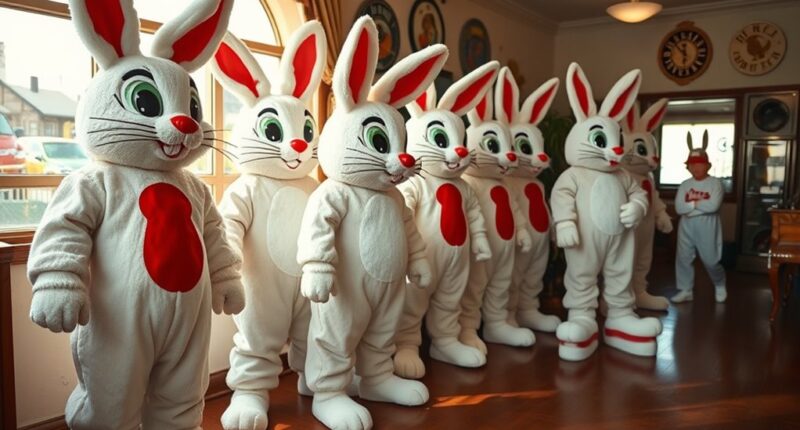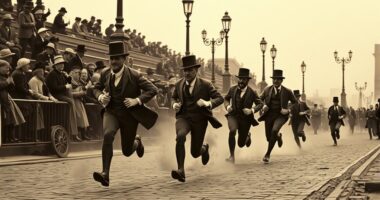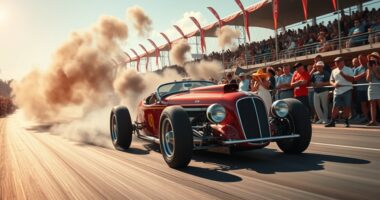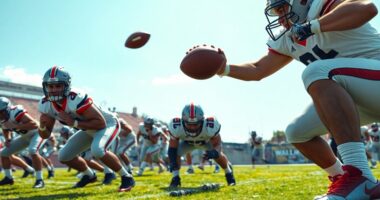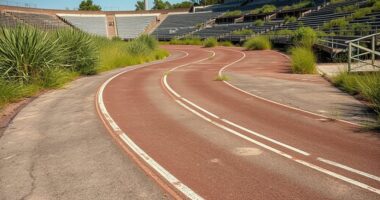Pace bunny mascots started as simple community symbols to boost race enthusiasm and foster connection. Over time, they evolved with improved designs, materials, and styles, becoming energetic figures that energize race atmospheres and bring communities together. These playful characters also carry deeper cultural meanings, symbolizing agility, renewal, and joy. Their ongoing popularity reflects a mix of tradition and innovation, making them more than just mascots—you’ll discover how they continue to capture hearts and adapt to new trends if you keep exploring.
Key Takeaways
- Originated as grassroots community mascots to boost enthusiasm and foster camaraderie in local races.
- Evolved through design improvements using advanced materials for better visibility, expressiveness, and performer comfort.
- Symbolize agility, renewal, and community spirit, often linked to Easter folklore and themes of growth.
- Play a vital role in energizing race atmospheres, encouraging participation, and creating memorable spectator experiences.
- Their evolving design and cultural symbolism reflect ongoing trends in branding, sustainability, and digital engagement.
The Origins of the Pace Bunny: From Local Races to Global Icon
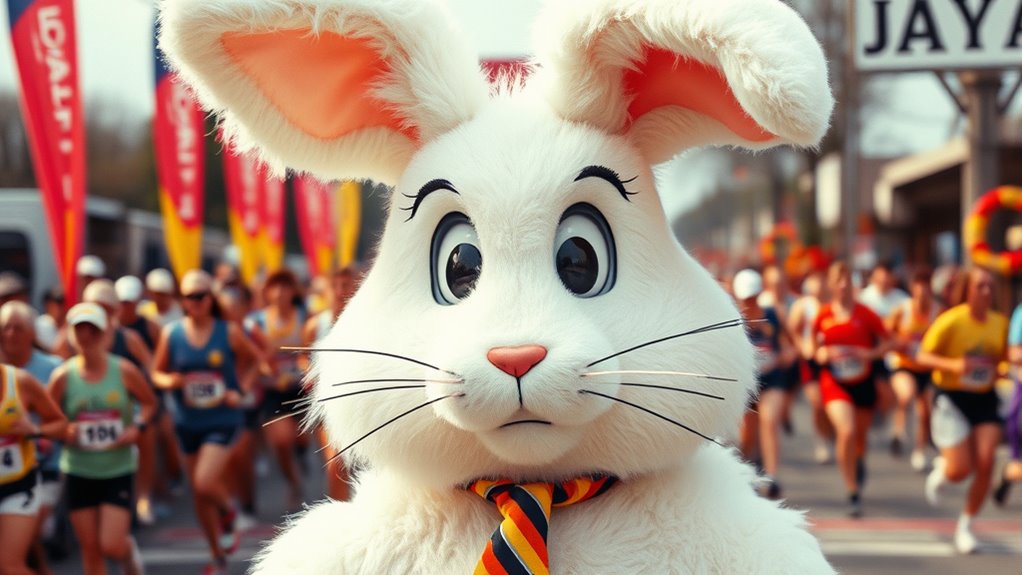
The Pace Bunny’s journey began in small-town races, where local organizers adopted the mascot to boost enthusiasm and community spirit. They started with simple race day costumes, often handmade and playful, to engage participants and spectators. As the races grew more popular, organizers recognized the impact of mascot recruitment—inviting volunteers to don the bunny suit and cheer on runners. This grassroots effort transformed the Pace Bunny from a fun costume into a symbol of motivation and camaraderie. Over time, these local efforts caught on, inspiring larger races to adopt their own versions. The simplicity of early race day costumes and the enthusiasm of mascot recruitment helped establish the Pace Bunny as a beloved figure, setting the foundation for its eventual rise to global recognition.
Evolution of Design: How Pace Bunnies Changed Over Time
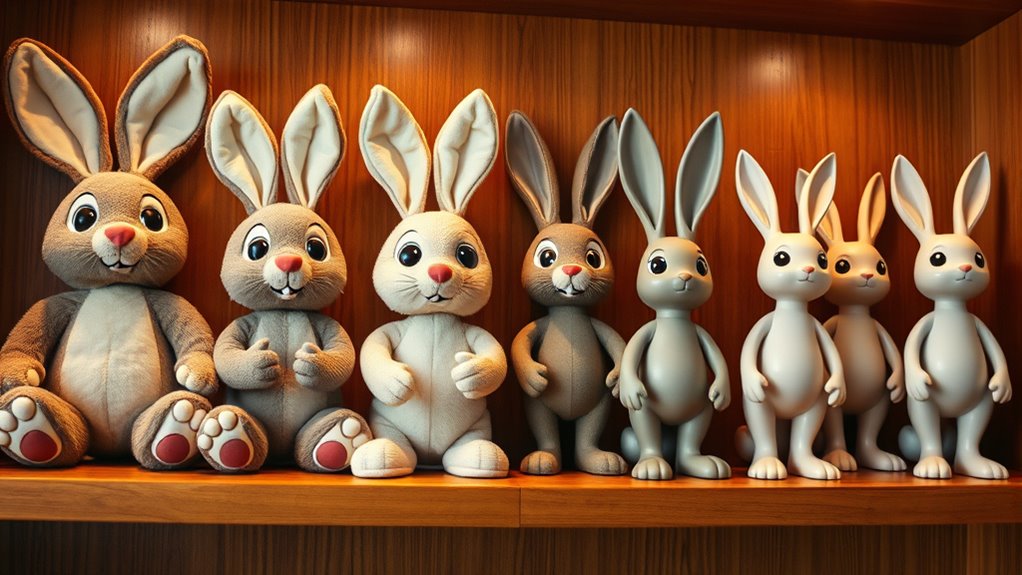
You’ll notice that Pace Bunny designs have shifted considerably over the years, reflecting changing tastes and branding trends. As materials and fabrics improved, the bunnies became more comfortable and expressive, adapting to new performance standards. Pay attention to how iconic features, like their ears and facial expressions, have evolved to keep the mascot fresh and recognizable. Additionally, the use of costume maintenance techniques has become essential in preserving the mascot’s appearance during high-energy events. Innovations in fabric technology have also contributed to making the costumes more durable and vibrant over time. Furthermore, understanding the evolution of mascot design helps explain how brands maintain relevance in a competitive entertainment landscape. The incorporation of advanced cleaning and repair methods has further extended the lifespan of these costumes, ensuring they remain iconic symbols for years to come.
Style Transitions Over Decades
As decades have passed, Pace Bunny mascots have undergone striking transformations that reflect changing design trends and branding strategies. You can see how color psychology influenced their appeal—bright, energetic hues in the 70s gave way to more modern, streamlined palettes. The evolution also focused on mascot ergonomics, making bunnies more approachable and easier to animate. Early versions featured exaggerated features, while recent designs favor clean lines and simplified shapes for versatility across platforms. Additionally, the use of design principles has become more prominent in shaping their modern appearances, aligning with contemporary branding aesthetics and indoor gardening trends.
Material and Fabric Shifts
Advancements in materials and fabrics have considerably shaped the evolution of Pace Bunny mascots, allowing creators to craft more durable, lightweight, and expressive costumes. Improved mascot materials enable better costume craftsmanship, making mascots more comfortable for performers and visually striking for audiences. Early Pace Bunnies relied on bulky foam and heavy fabrics, which limited movement and expression. Today, lighter synthetic fibers and high-quality foam provide flexibility, durability, and realism. These material shifts have also enhanced breathability and safety, ensuring mascots can perform longer and more energetically. As a result, the evolution of costume craftsmanship driven by new mascot materials has transformed Pace Bunnies from simple representations to dynamic, engaging characters that resonate with audiences while maintaining practicality for performers. Additionally, the use of simulation software in designing costumes has allowed for more precise fitting and testing before production, which is an example of how creative practice can incorporate technological innovations. The integration of specialized fabrics has further contributed to the realistic and vibrant appearance of the mascots, elevating their role in branding and entertainment.
Iconic Features Evolution
Over time, Pace Bunny mascots have undergone significant design changes that reflect both evolving audience tastes and technological innovations. Early versions featured simple bunny costume craftsmanship, with basic fabric and limited mobility, emphasizing straightforward visual appeal. As audiences grew more sophisticated, designers refined features like expressive eyes and dynamic postures, enhancing mascot performance techniques to boost engagement. Modern Pace Bunnies incorporate advanced materials for durability and comfort, allowing for more energetic movements and better audience interaction. These updates also involve improved craftsmanship, ensuring the mascots maintain their iconic charm while adapting to new media formats, such as televised events and social media appearances. Additionally, the costume craftsmanship has evolved to include lightweight, breathable materials, increasing comfort and mobility for performers. Overall, the evolution of their iconic features showcases a blend of tradition and innovation, keeping Pace Bunnies relevant and beloved across generations.
The Role of Pace Bunnies in Race Day Atmosphere

Pace bunnies help create an electric race day atmosphere that gets everyone excited. They boost energy levels and set a lively tone for both runners and spectators. Plus, their interactions make the event more engaging and memorable for everyone involved.
Building Excitement and Energy
On race day, pace bunnies play a pivotal role in energizing the crowd and creating a lively, motivating atmosphere. Their presence boosts race day energy and encourages runners to stay focused. As you watch them hop along, notice how they foster mascot engagement, making spectators feel part of the event. Their enthusiasm is contagious, inspiring both runners and spectators alike. Here’s how they build excitement:
| Action | Effect |
|---|---|
| Cheering loudly | Boosts morale and keeps energy high |
| Engaging with spectators | Creates a sense of community |
| Running alongside runners | Motivates participants to push harder |
Their lively antics turn the race into a celebration, making it memorable for everyone involved.
Engaging Spectator Interactions
Spectator engagement is a vital part of the race day atmosphere, and pace bunnies excel at making spectators feel involved. Their colorful race day costumes instantly capture attention and spark excitement. As they run alongside runners, pace bunnies often perform lively mascot choreography, encouraging cheers and high-fives from the crowd. They interact with spectators through playful gestures, waving, and even dancing, creating a lively, inclusive environment. These interactions turn passive spectators into active participants, boosting morale for everyone involved. The combination of eye-catching costumes and energetic mascot choreography makes pace bunnies more than just pacers—they become integral entertainers, fostering a sense of community and fun. Their engagement helps transform the race into a memorable, joyful experience for all attendees.
Behind the Mascot: Who Are the Creators and Why Do They Choose Bunnies?
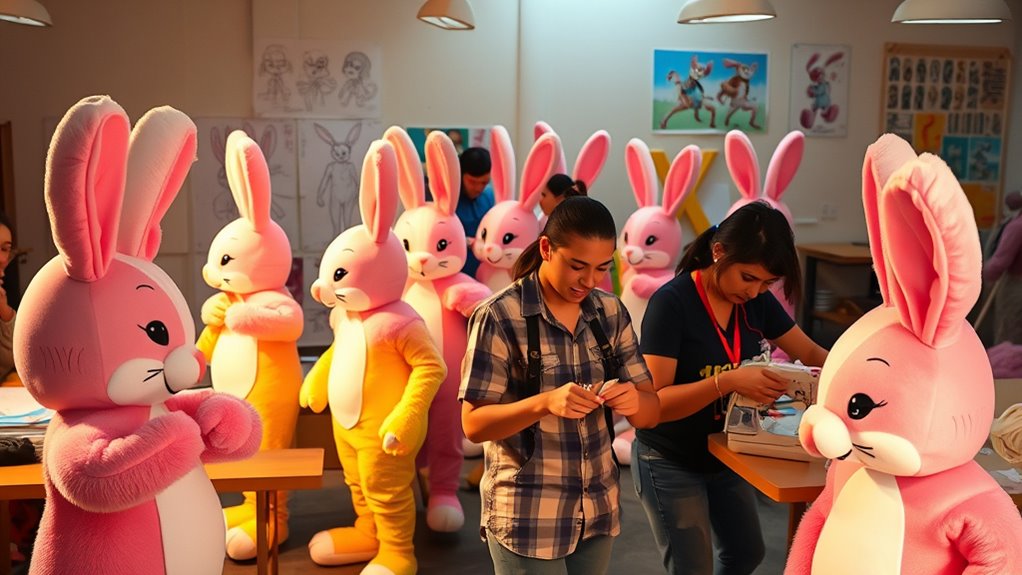
Have you ever wondered who’s behind the iconic Pace Bunny mascots and what motivated their creators to choose rabbits? The creators often use creative symbolism and mascot psychology to craft characters that resonate deeply. They see bunnies as symbols of energy, agility, and friendliness—qualities that align with the brand’s message.
Creators choose rabbits for mascots to symbolize energy, agility, and friendliness that resonate emotionally with audiences.
- They want to evoke feelings of warmth and trust, making the audience connect emotionally.
- The playful nature of rabbits sparks joy and excitement, encouraging engagement.
- The choice of bunnies reflects agility and speed, reinforcing the brand’s dynamic image.
These creators intentionally select rabbits because they embody a mix of innocence and quickness—powerful emotional cues that make their mascots memorable and meaningful.
Cultural Significance and Symbolism of the Bunny Figure
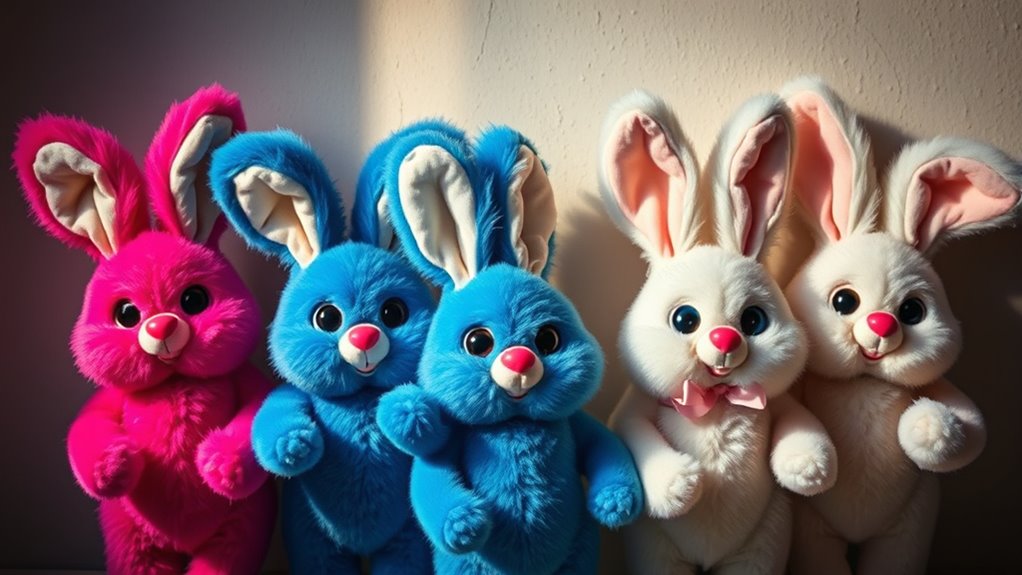
Throughout history, rabbits have held rich cultural symbolism across various societies, representing qualities like fertility, rebirth, and agility. You’ll find Easter symbolism closely tied to rabbits, especially the hare, which signifies renewal and new beginnings during spring festivals. In hare mythology, these creatures are often seen as messengers between worlds or symbols of spiritual awakening. Their rapid movements and elusive nature embody agility and quick thinking, making them powerful symbols in folklore. As mascots, Pace Bunnies tap into this deep symbolism, evoking notions of vitality, renewal, and positive momentum. Their presence resonates beyond marketing, connecting communities to age-old themes of growth and rebirth that are woven into human culture worldwide.
Marketing and Brand Identity: How Pace Bunnies Promote Events and Causes
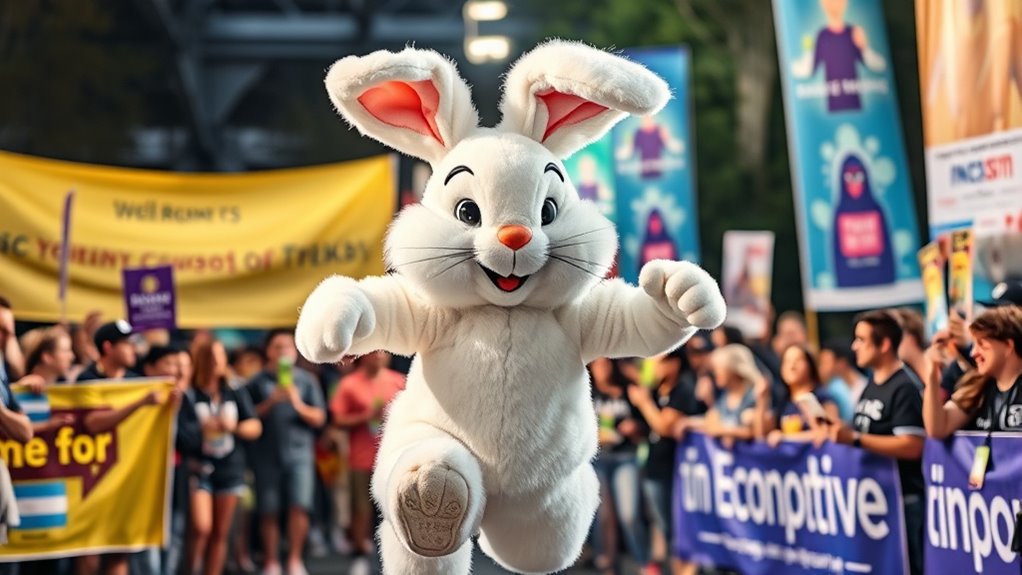
Pace Bunnies serve as vibrant ambassadors for promoting events and causes, leveraging their playful and energetic presence to attract attention and foster engagement. Their race day attire and mascot costume design are carefully crafted to stand out, making them instantly recognizable. When you see a Pace Bunny, you feel inspired, motivated, and connected. They evoke emotion through:
- Creating memorable moments that encourage community participation.
- Enhancing brand visibility with eye-catching costumes and lively antics.
- Building emotional bonds that turn spectators into loyal supporters.
These mascots aren’t just fun; they’re powerful marketing tools that embody the spirit of the event, rallying crowds around a shared purpose. Their presence amplifies messaging, making campaigns more impactful and memorable.
The Community Impact: Connecting Runners and Spectators Through Mascots
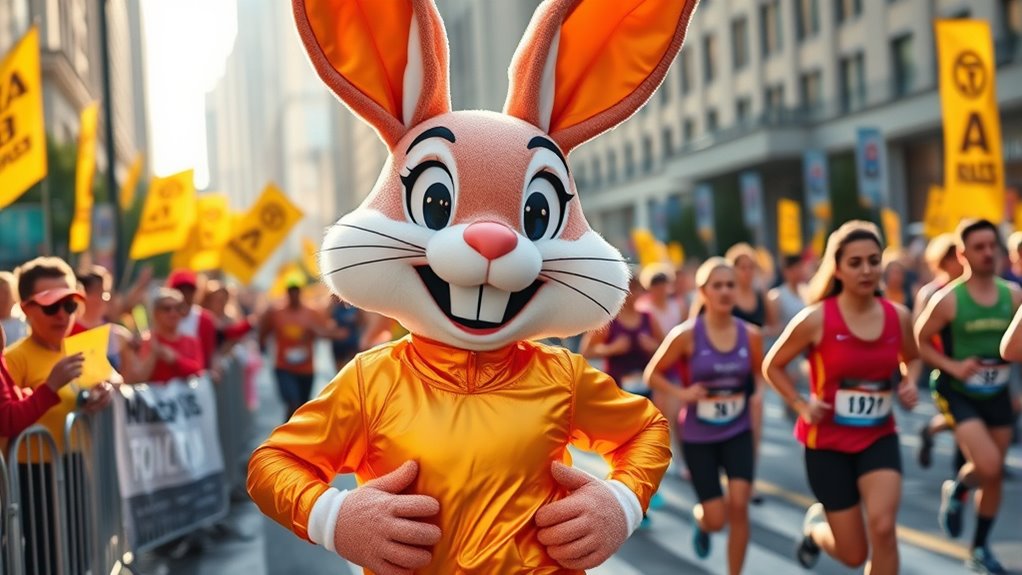
How do Pace Bunnies foster a sense of community among runners and spectators? They serve as lively symbols that promote community bonding and boost spectator engagement. By interacting with both groups, Pace Bunnies create shared moments that unite everyone. Their presence encourages cheers, high-fives, and photo ops, strengthening the race atmosphere. This engagement extends beyond the racecourse, fostering connections that last. The table below highlights ideas that illustrate this community impact:
| Runners’ Experience | Spectators’ Engagement |
|---|---|
| Motivational cheer | Photo opportunities |
| Shared excitement | Participating in mascot activities |
| Building camaraderie | Creating memorable moments |
| Encouraging participation | Supporting a positive race vibe |
Nostalgia and the Growing Popularity of Pace Bunny Celebrations
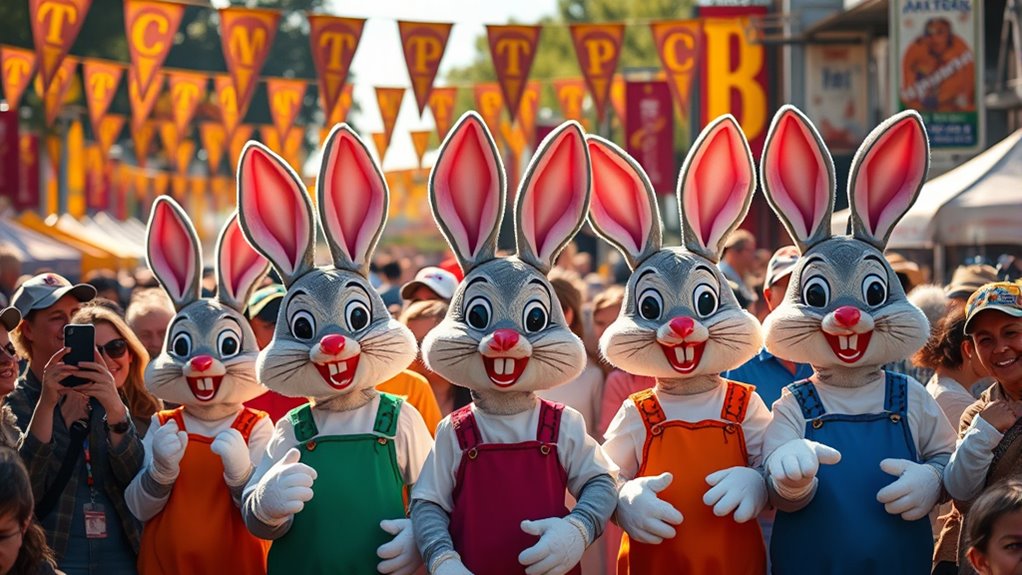
The Pace Bunny tradition has grown in popularity partly because it taps into a sense of nostalgia that resonates with both longtime race fans and new participants. This nostalgia connects to memories of Easter celebrations, childhood joy, and shared community moments. You might find yourself feeling a wave of emotion when you see the bunny, as mascot psychology shows these symbols evoke comfort and familiarity. Consider these impactful aspects:
- Recalling family traditions and festive cheer during Easter.
- Reinforcing a sense of belonging within the race community.
- Creating a timeless link between past and present race experiences.
These celebrations tap into universal feelings, making the Pace Bunny more than just a mascot—it’s a symbol of joy, unity, and tradition that continues to grow in popularity.
The Future of Pace Bunnies: Trends, Innovations, and Continuing Relevance
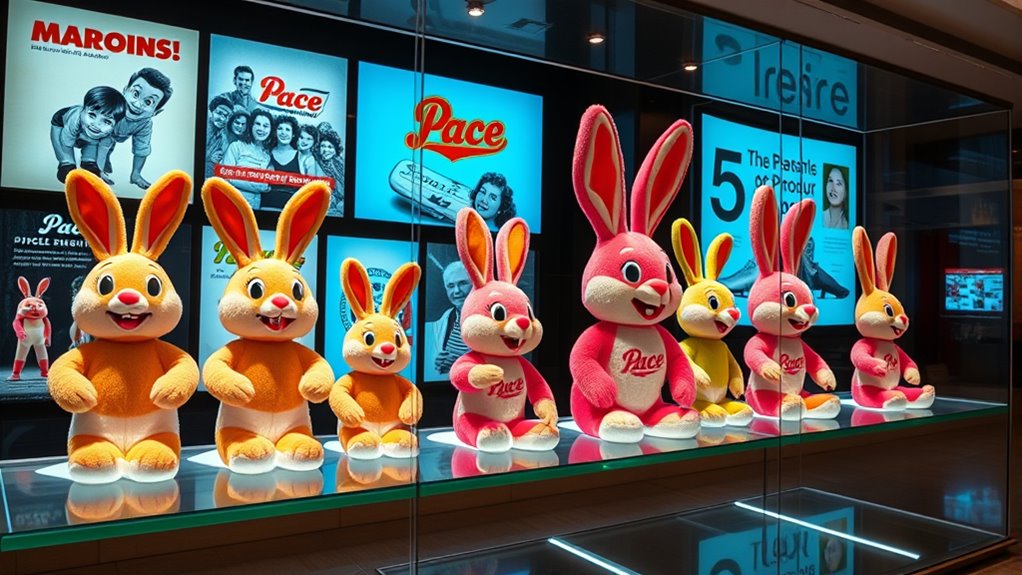
As the Pace Bunny continues to evoke feelings of nostalgia and community, its future will depend on embracing new trends and innovative approaches that keep it relevant. Incorporating sustainable materials will appeal to environmentally conscious audiences and demonstrate a commitment to eco-friendly practices. Using digital enhancements, like augmented reality experiences or interactive social media campaigns, can engage younger generations and modernize its image. These innovations allow the Pace Bunny to stay connected with audiences beyond traditional events, creating a dynamic presence that adapts to changing technology and consumer expectations. By blending tradition with innovation, the Pace Bunny can maintain its relevance, fostering continued loyalty and excitement around its legacy while embracing a sustainable and digitally savvy future.
Frequently Asked Questions
How Do Pace Bunnies Influence Local Community Engagement?
You see, pace bunnies boost community spirit by creating fun, memorable moments at races and events. They help strengthen local branding, making events more recognizable and inviting. When you engage with pace bunnies, you feel more connected to the community, inspiring participation and support. Their lively presence encourages unity and pride, making local gatherings lively and inclusive. Ultimately, they turn ordinary races into spirited celebrations that everyone remembers.
Are There Variations of Pace Bunnies Worldwide?
You might notice that international variations of pace bunnies exist, reflecting cultural adaptations across different regions. These mascots often incorporate local symbols or styles, making them unique to each community. By embracing cultural adaptations, these mascots resonate more deeply with local audiences, fostering greater engagement. So, yes, there are international variations, and they showcase how mascots can evolve to represent diverse traditions and values worldwide.
What Materials Are Typically Used in Creating Pace Bunny Costumes?
Imagine slipping into a costume designed for both performance and comfort. You’ll find that most pace bunny costumes are made from lightweight fabrics like polyester and foam, blending durability with breathability. These materials keep the costume resilient against wear and tear, while allowing airflow so you stay cool during long races. The right combination guarantees you stay energized and comfortable, ready to cheer and motivate without feeling weighed down.
How Do Pace Bunnies Impact Race Participant Motivation?
You see, pace bunnies boost race participant motivation through motivational symbolism and mascot psychology. Their presence inspires runners, making them feel supported and confident. As symbols of pace and perseverance, they encourage participants to push harder. You’re likely to find that their cheerful energy and visual cues help reduce anxiety, foster camaraderie, and motivate runners to achieve their personal bests, proving how powerful mascots can be in race environments.
What Are the Environmental Considerations for Pace Bunny Mascot Events?
When organizing pace bunny mascot events, you should prioritize sustainable practices and waste reduction. This means using eco-friendly materials for costumes, minimizing single-use items, and encouraging participants to bring reusable bottles and gear. You also need to plan for proper waste disposal and recycling stations. By focusing on these environmental considerations, you help protect the environment while creating a fun, responsible event that promotes awareness and positive habits among runners.
Conclusion
You might think mascots are just fun visuals, but pace bunnies truly embody race spirit, motivation, and community. Their evolving designs and cultural significance prove they’re more than mere symbols—they’re catalysts for connection and inspiration. As trends shift, their role remains essential, blending tradition with innovation. So next time you see a pace bunny, remember, they’re not just mascots—they’re ambassadors of perseverance and unity, enriching every race experience you cherish.
